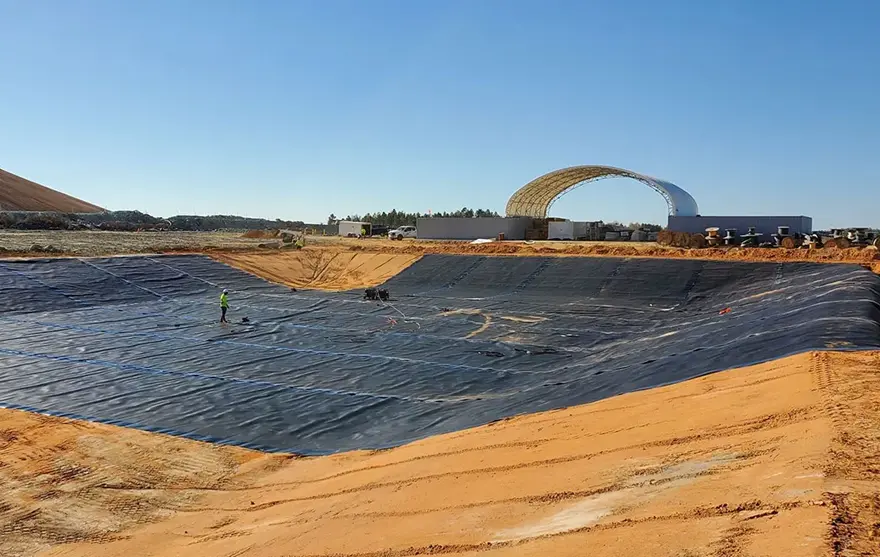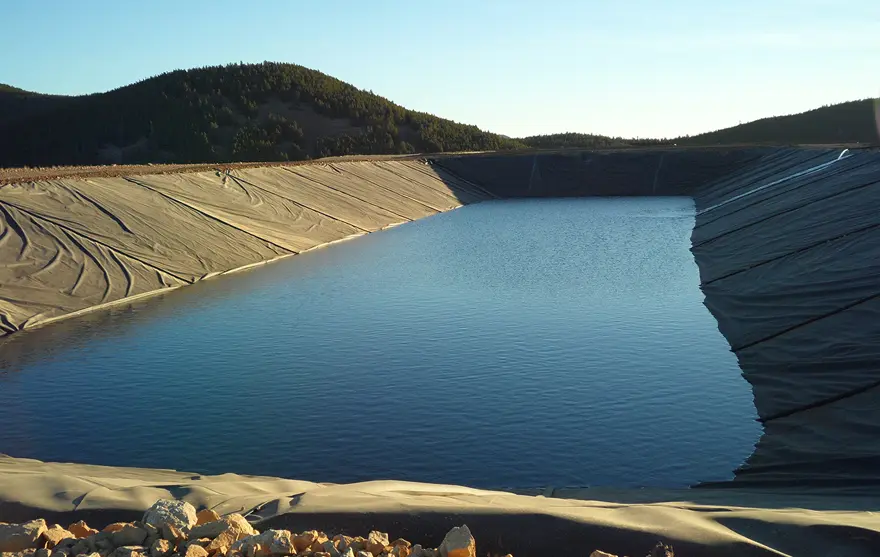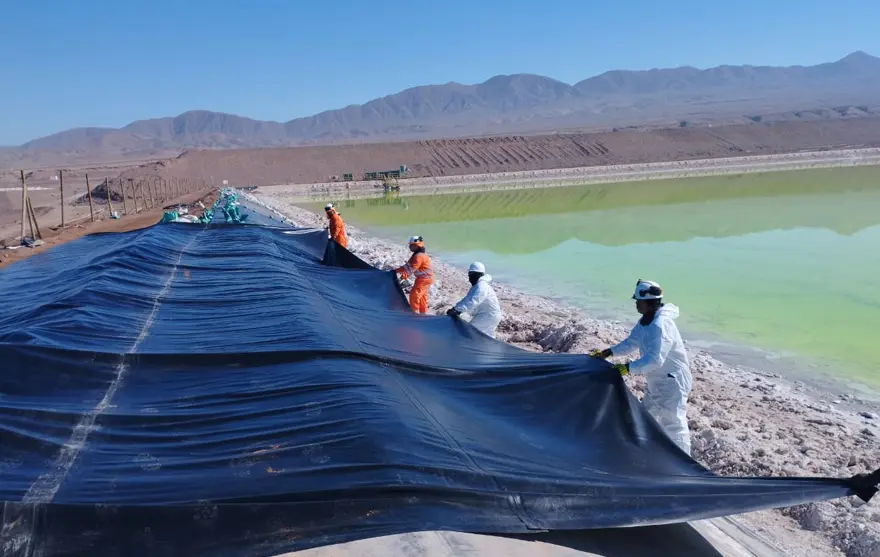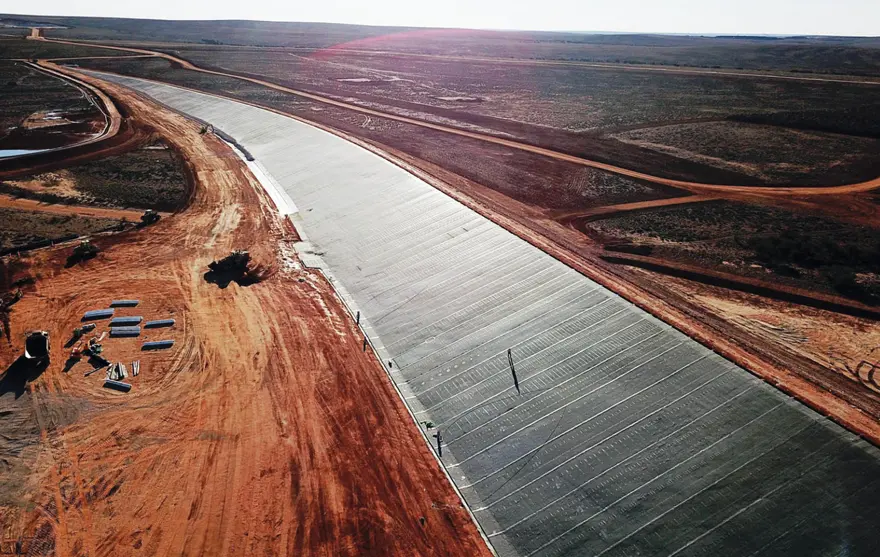
Geomembranes can be divided into three categories: ordinary geomembranes (single membrane), composite geomembranes, and reinforced geomembranes.
(1) Ordinary geomembrane: only a single-layer membrane material. It is made of polymer, elastic material and low molecular material through rolling or extrusion process. It is a homogeneous film without any fabric reinforcement. Its typical thickness is 0.25 ~ 4mm (extrusion process) and 0.25 ~ 2mm (rolling process).
(2) Composite geomembrane: Polymer film and geotextile are heated and pressed together or bonded with adhesive. It can be a layer of film and a layer of fabric pressed together (commonly known as one cloth and one film), or a layer of film laminated between two layers of fabric (two cloth and one film), or three cloth and two films according to engineering needs. The advantage of this kind of membrane is that the geotextile can protect the geomembrane from being pierced by gravel, from being damaged and mechanically crushed, and the geotextile has a drainage effect and can increase the friction coefficient with the contact surface.
(3) Reinforced geomembrane: In order to improve the tensile strength, burst resistance and tear resistance of the geomembrane, the polymer is reinforced inside, and the reinforced material is generally nylon silk cloth, nylon canvas, polypropylene needle-punched fabric Wait. According to the needs of the project, the number of reinforcement layers can be selected as one layer, two layers or three layers.
(4) 6 performance characteristics of geomembrane:
(5)The properties of geomembranes generally include physical, mechanical, hydraulic and durability properties.
(6) Physical performance indicators: including mass per unit area (g/mm2), thickness (mm), material specific gravity, pore diameter, etc.
(7) Mechanical properties: including tensile strength, grip strength, tear strength, burst strength, burst strength, puncture strength, etc.
(8) Hydraulic performance indicators: including horizontal and vertical permeability coefficients, silting, water resistance, etc.
(9) Durability performance indicators: including wear resistance, anti-ultraviolet ability, chemical stability, biological stability and anti-atmospheric environment.
(10) The performance index of ordinary geomembrane (PE film) is:
①. The density should not be lower than 900 kg/m3;
②, the failure tensile stress should not be lower than 12MPa;
③. The elongation at break should not be lower than 300%;
④. The elastic modulus should not be lower than 70MPa at 5oC;
⑤, frost resistance (brittleness temperature) should not be lower than -60oC;
⑥. The connection strength should be greater than that of the base metal;
⑦. The tear strength should be greater than or equal to 40N/mm;
⑧. The impermeability strength should be water-proof for 48 hours under 1.05MPa water pressure;
⑨. The permeability coefficient should be less than 10-11cm/s;
⑩, the film thickness is not less than 0.25mm.
The performance index of the composite geomembrane is determined according to the number of layers of composite membrane and cloth.



